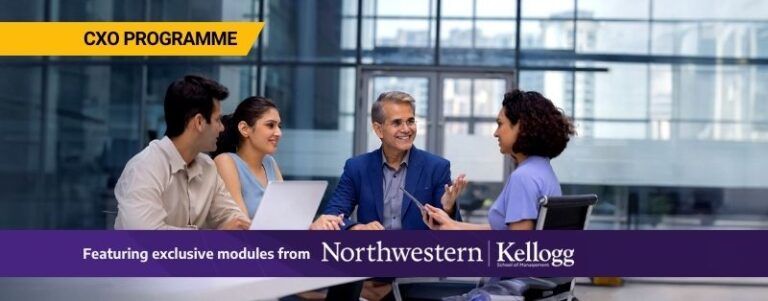Leadership and it’s role in Change Management

Leadership – a name as heavy as it sounds is rightly so, given the nature of the responsibility it curtails. It is the X factor that heightens an organization, especially in times of unprecedented downfalls. But it is not just another position that any individual can prove fit for, simply based on a certain qualification or merit or an experience for that matter. It is the attitude and traits of the individual that make him a leader, a virtue that reflects effortlessly against all odds in the best and worst of times, especially changes.
What is Change Management?
As George Bernard Shaw once said, “Progress is impossible without change, and those who cannot change their minds cannot change anything.” Yes, a rather dreaded phenomenon for any individual or an organization to put things in perspective is change.
Who would want a routine that they are supremely comfortable with to change? Quite precisely, no one, unless there is an underlying resentment towards the current environment or a strong expectancy of a desirable outcome post the change’s implementation.
“Change” is inevitable and often unfamiliar, which brings in discomfort and a certain resistance in an organization, partly or wholly, who is to bear with it.
Role of Leadership skills in Change Management
Having said that, it brings us to the role of leadership skills in managing such changes and facilitating the acceptance of it in the face of resistance, which can be of 3 types:
Logical and rational
Based on time required to adjust, extra efforts to learn, economic costs, and questionable technical feasibility.
Psychological and emotional
Budding through the fear of the unknown, low tolerance to changes, lack of trust, desire for the status quo, and dislike for the change agent.
Sociological
Attributed to political coalitions, parochial outlook, vested interests, and opposing group values.
Such resistance to change is primarily based on the following one or many underlying factors:
- Individual Resistance: depending upon economic, psychological, or social factors
- Group resistance: based on the group’s status, norms, cohesiveness, and social interactions
- Organizational resistance: stability of the system, resource limitation, sunk costs.
You can learn more about leadership in change management by enrolling in an online leadership program at Emeritus today.
It is the onus of the leader to maneuver the organization through this resistance towards an affirmative outlook and by building trust in what is to follow. He is the one who can help overcome unproductive resistance to change by keeping the following pointers in mind:
Building A Connection With The Employees
Listening first, taking second. Most often, leaders are mistaken for being extremely authoritative and self-centric. This approach makes the people feel heard, appreciated, and valued, which drastically reduces the resistance, makes them feel comforted, and easily settle with the process that they are subject to encounter.
This, in turn, is extremely pivotal to garnering support from the team. Hence, the role is clear; the leader must be transparent, clear-headed, and straightforward but also be approachable. That is why leadership skills are integral.
Clarifying The Vision And Communicating
Doing this for a change to establish faith and trust in what is to follow and why it could be necessary is important. That is essential to have people “buy into” the vision of the organization. Consistency is of utmost importance, be it in addressing day-to-day issues or the more serious programs. It is the leader’s role to exude clarity and confidence to ensure receptiveness from the targeted audience.
Showing Excitement And Heightening Employees Engagement
Making it appear more employee-centric. Such leaders keep in mind all aspects of culture, processes, and employees to get the most optimal results. The leader understands the value of their employees’ interests and tries to address any shortcomings there may be to bridge the gaps between the senior management and the employees.
Be Accountable And Rational
Let numbers and data do the talking for you. At the same time, the leader’s accountability nurtures a sense of commitment in the employees’ minds as well. When they feel a better connection with leadership and management, in terms of candidness, without blame-gaming, the employees embrace changes so much better.
Set An Example
An effective leadership and management team understands the importance of the above pointers and of his role. It is a blend of the 3 C’s – Care, Commitment, and Communication, that helps bridge the gap between the organization and the envisioned change.
It is also more like preaching what you teach. It is the leader who is supposed to be the contributor, quite large in the process of adjustments and alignment in the face of organizational changes. That is why he is so integral.
Do you want to learn more about leadership? If you just said yes, make sure you enrol for Emeritus’ online leadership program today.
To understand better, let us understand John Kotter’s 8-step model, according to which a leader has the following eight roles to play:
8 Roles Of A Leader By John Kotter
- Create: a sense of urgency
- Build: bind the team with coalition and guidance
- Form: strategic vision and initiatives
- Enlist: support by volunteering teammates like an army
- Enable: act and remove barriers
- Generate: short-term wins to keep the spirits high
- Sustain: the momentum and acceleration gained from the above
- Institute: establish and ingrain the change
Having understood the significance of a leader’s actions in change management models, we shall now focus on the roadblocks faced by many competent individuals in practicing the same. Some beautifully manage to navigate through these pitfalls to succeed in their desired missions, while some face undesirable or seldom irreparable consequences.
The Bottom Line
In the event of a leader failing to meet expectations, it may result in the team becoming disillusioned, demotivated, and confused. This would only add to the chaos. The outcome, as expected, is that the business suffers amidst other downfalls. So, no wonder the bullet is to be borne by the leader. Some leaders may struggle in aspects of time or people management, or in terms of handling complexities too. On the contrary, some may overcome these, others might find reinforcement of risk handling.
Hence, we can certainly say the role of a leader is as crucial as the change, if not more, in taking an organization to new heights or redefining it and its future.
Given their position of responsibility and vulnerability, they must have what it takes to practice change management models with the right mentality, or else the change would manage them instead of the other way around. After all, leaders aren’t immune to the steaming pressure of their people’s expectations, and that is why the good ones deliver results without this fear.














